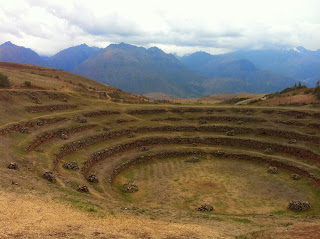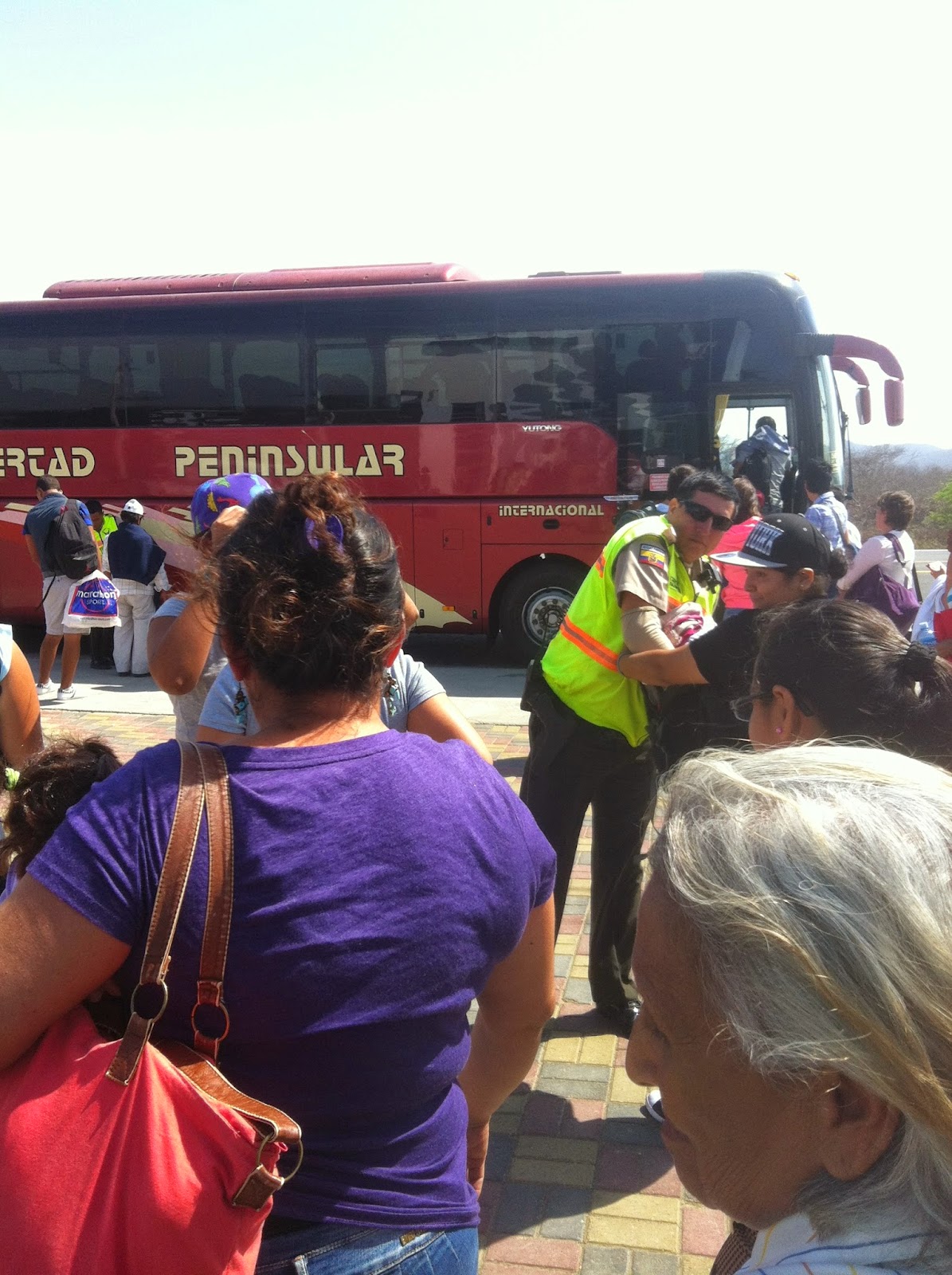It was March 2011 and I had just signed my second contract to teach
English in South Korea for another year. After a 14 hour flight I was
dreading another 4 hour bus ride from Incheon airport to Gwangju, the
city I was heading back to teach in but I was more prepared as this was
my second go at it. Just like last year I imagined the somewhat tedious
bus ride to be full of Korean nationals and me being the solo foreigner
which meant another couple hours of more playlists on repeat.
...……………………………...………………………...………………………...…………………
The
buses in Korea are quite similar to the buses in South America (Bolivia
doesn't count). Their wide, reclining seats help make for a
comfortable journey and all would be wonderful if the said country
decided against playing an old movie in their native language and
blasting the sound through the speakers above our head. Even if we could
understand the dialogue I don't know who thought that was a good idea.
Originally,
Adam and I weren't planning to include Chile in the itinerary but
somehow, we ended up staying in a colorful, eccentric, bohemian old port city
called Valparaiso. Graffitti is an honored art form here and every corner you turned a story was told through creative and beautiful spray paint and decor. Getting lost in that city was something you hoped for- it made for a very interesting, colorful and unique day to say the least.
 |
| Street art on an apartment in Valpariso |
Our last adventure in Bolivia was the Salt
Flat tour which consisted of driving in a four wheeler over desert,
mountains and miles of frozen salt flats. The tour was three days of
some of the most incredible landscapes I've ever seen and what made it
even more special were the other four people in our jeep (and the fact
that our tour guide was sober the whole time). We had met a group of
travelers along the way and all decided to join forces. We spent our
first night sleeping in an Salt Hotel (the fabric of the hotel is pretty
much self explanatory) but to paint a clearer picture for you I asked
Adam to lick the inside wall of our bedroom wall to prove it really was all
salt and based on his facial reaction, the hotel was indeed made solely
of solidified salt- tables, chairs, bed frame, ceiling and even the
walls! Our friend accidentally spilt red wine on her sweater and 15
seconds later she was rolling around on the salty floor gathering piles
to bury the stained patch in. The following morning the red wine stain
was no longer and our team moved on to the next activity- watching
flamingos be flamingos. Sounds boring but these pink, stoic birds all
gathered together by a lagoon and the reflections of the mountain and
the water created a fascinating real life painting right in front of our
eyes. It was one of the most beautiful sites I've ever seen. Too bad I
can't paint if my life depended on it. Fortunately I took some pretty
pictures.




 |
| The beautiful red lagoon |
The tour began in Bolivia and ended
by crossing over the border to Chile. So low and behold we had now added
another country to the itinerary. I can assure you, neither of us were
disappointed about this. My American friend Beth who I met while
teaching in Korea recently moved to Valpariso in a beautiful house on a
hill overlooking the city and generously offered to put us up for some
time. She lived about a 24 hour bus ride from where we got dropped off
in San Pedro but instead of enduring a dreadfully long journey to the
other side of Chile to meet her, we joined another three day tour that
drove us much closer to Valparaiso and also stopped at view points and
national parks along the way.
 |
| View from our tent |
We camped on a beach, had BBQs each night
and toured Valle Elqui- Pisco county. We made a pit stop at Cejar Laguna
- a gorgeous little body of water in the middle of the desert that has
such a high salt quantity, tourists and locals all go to float above the
water just like in the Dead Sea. On our last night the tour took us
star gazing at an observatory where we got to see Mars, star clusters
and other galaxies through the lens of a telescope. We saw a lot more of
Chile (and our Universe) than we would have if we just took an
overnight bus to Valpariso. Good thing our coin landed on heads!
Flipping a coin has been the main factor in our decision making and so
far fate seems to lie on our side. No complaints yet!
 |
| Cejar Laguna |
 |
| Horse back riding in death valley, Chile |
Once
we arrived to Beth's house it felt like we had re-entered the first
world. Chile actually has paved roads, stop signs, toilet seats and
drinkable running water! It even has McDonalds. Yup we were back in the
real world and it felt (and tasted) so good! The fact that we could now
brush our teeth with tap water and not always be thinking about where we
can steal the next toilet paper role (okay maybe that was just me) made
us feel a bit more... "normal" - not the dirty, hippy travelers we've
become. After almost three months of backpacking I feel more
comfortable wearing the same outfits most days and showering only when
necessary. Adams face hasn't seen a razor since we arrived (neither have
my legs for that matter...apologies) and I try to avoid any reflections
when possible.
It's funny actually- if I knew
what I know now I probably would have packed a lot differently! I have a
whole makeup case that is just taking up space in my bag, I would have
replaced that with a healthy bag of drugs, ie: Imodium, peptobismol, dioralyte, Vitamin C and so on. I would have definitely included more
tissues, an endless supply of hand sanitizer and probably stolen an
extra blanket from Air Canada for the cold nights. The weather in South
America has been so bipolar it really starts to mess with your mind. The
salt flat tour is a good example of hot and sunny days yet freezing
cold desert nights! I've never in my life packed for one trip where I've
had to prepare for all four seasons! I guess it just adds to the
ambiguity of our trip as a whole. Either way it makes for a good adventure and something to write home about.
We really enjoyed our
time spent in Chile beyond what we would have reasonably expected. Beth
was a wonderful host and showed us a different angle of Valpariso, where she's been living for six months. We spent time admiring this whimsical city, the graffiti filled streets,
colorful houses and observed the grumpy sea lions on the beach in
their natural habitat.
After about a week of living
like locals in Valpo, we were just starting to get comfortable (we
even had our own butcher!) which is typically our cue to move on to the
next- a country Adam and I have been waiting eagerly to explore. It's
filled with beaches, grapes, the Atlantic Ocean, filet mignon and some
very passionate football fans. Argentina, its amazing wine and beautiful
landscapes have been enchanting to say the least. Our first stop was a
small city in the country where we spent the day riding bicycles around
vineyards in Maipu, Mendoza passing by the massive Andes and tasting
some of the local produce. We started off riding in an organised, sober
fashion cycling in a straight line with all the proper biking equipment.
As the day progressed and the wine quickly flowed, the bike path became
blurrier, our lips were stained a dark shade of red and our original, rented bikes were nowhere to be found. At the end of the day we cycled back to
the rental shop a little confused and hunched over on two children's
bicycles that we can only assume were swapped for ours. At least I hope
that was the case.
 |
| The glorious border crossing from Chile to Argentina... |
 |
| Our original rented bikes |
 |
| Maipu and the Andes behind |
We came, we saw and we
thoroughly drank our way through Mendoza (hopefully didn't scar any
bicycle-less children in the process). Afterwards we stopped in Cordoba,
a lively little Argentinian city surrounded by mountains and riddled
with history - most famously known as the city closest to where Che
Guarvara grew up.
 |
| Adam and Che |
We spent two days touring the city and stumbled across
a hidden little lake behind a patch of trees. It was like a secret gem.
We felt like we struck gold and spent most of our last day tanning by
the water until the sun began to set and it was time to head back.
Once again we found ourselves
in the middle of nowhere with hardly any busses passing us by. So we did
what we seem to do best... we hitchhiked as far south as we could get
(sorry Dad) just in time to catch our long awaited final bus to the
capital of Argentina, the city we've been dying to see - Buenos Aires!
 |
| "Don't cry for me Argentina"- Evita |
We
now have just over one week left of traveling and a lot more beaches,
tango shows and steak to get through. Our "extended" honeymoon has been
an amazing, eye opening adventure. An unforgettable trip of a lifetime,
really. Going home will be bitter sweet but at least I won't feel
guilty throwing toilet paper in the toilet or being misunderstood 90% of
the time I attempt to communicate. It will be nice to eat dinner again
at a reasonable hour (most restaurants don't open until 9:00pm...my grandparents would be appalled) and I
won't feel on edge every time we turn a corner and hear dynamite going
off in the streets. Almost every big city we've visited there has been a
demonstration at least once for some reason or other. I've come to the
conclusion that South Americans thrive off a good protest.
We
will spend our last few days in Uruguay where we've heard the beaches
are stunning, the sunsets are like a colorful box of pastel crayons in the sky and the marijuana is legal. Enough said. So for now i'll put
down my pen and paper and just enjoy the last of what this amazing
continent has to offer.
.JPG) |
| Happy Holidays! From Punta Del Este beach, Uruguay |
...………………………...………………………...………………………...………………………
Waiting to
board the bus at Incheon airport and preparing for a long, quiet journey
to Gwangju, I felt a light tap on my shoulder which prompted me to
remove my earphones and see who required my attention. Following the
friendly tap was a sweet, masculine British accent and now standing
infront of me was a tall, slim brunette twenty something year old male
foreigner who kindly offered to place my luggage under the bus. As we
were the only two non Koreans about to board we decided to sit together
and chat about what brought us to the South. Four hours of conversation
felt like four minutes of getting to know each other and we still had
another twenty odd years to get through! As the bus pulled up to the Gwangju
terminal I realised I hadn't even asked for his name. "Adam Hess" he
said. I took out my iPod, opened the notes section and just to ensure I
remembered who it was I had been sitting next to, I typed "Adam Hess-
English Bus Boy".













.JPG)














































